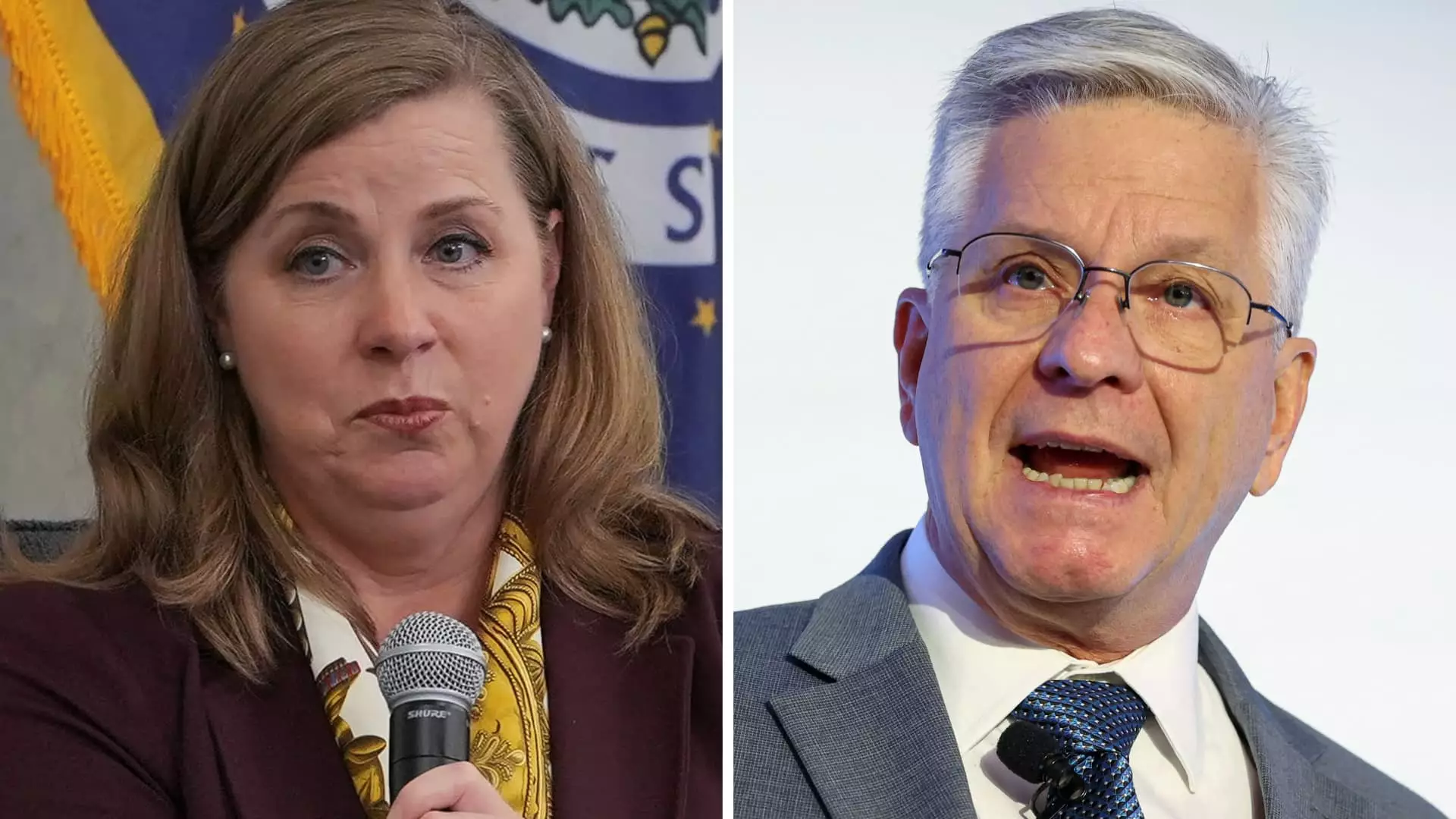Recent dissenters within the Federal Reserve, Christopher Waller and Michelle Bowman, have challenged the consensus to keep interest rates steady, warning that this cautious stance could be perilous. Their opinions highlight an urgent debate about the Fed’s future trajectory—whether to proceed with modest rate reductions or remain on hold amid mounting economic uncertainties. Their voices, the first public dissent since 1993, underscore a crucial pivot point for the U.S. economy. While their call for gradual easing resonates with a rational approach, their critique also reveals a deeper hesitance rooted in cautious optimism, which might be precisely the risk we cannot afford in volatile times.
The broader context involves mounting external pressures—particularly trade tensions and tariffs—which the Fed perceives as temporary. Yet, the assumption that these shocks will dissipate swiftly is dangerously optimistic. Both Waller and Bowman argue that inflation, presently influenced by tariffs, is primarily a transient phenomenon, and that delaying rate cuts could inadvertently stifle economic momentum. This point of view presents a stark contrast to the aggressive stance favored by President Trump, who urges substantial and rapid lowering of interest rates to stimulate growth. Their emphasis on “gradual” easing, aligning with cautious monetary policy, risks underestimating the urgency of responding decisively.
However, the central issue goes beyond mere policy preferences. It touches on the fundamental question of whether the Fed adequately recognizes the escalating fragility of the labor market and the potential for longer-term damage. The labor market’s health, often considered a leading indicator for economic stability, appears overlooked when policymakers delay action. If employment begins to deteriorate, the cost to American workers could be severe, especially if delayed stimulus exacerbates downturn potentials. The Fed’s conservative approach could be an erosion of its core mandate—prioritizing employment and inflation stability—if it neglects timely intervention.
The significance of the dissent within the Fed also reflects deeper ideological undercurrents. While some interpret it as a sign of healthy debate, it also signals the tension between cautious conservatism and the necessity for proactive measures. Waller’s concern about policy “falling behind the curve” illustrates a fundamental misunderstanding of economic resilience; delaying rate cuts in hopes of avoiding overstimulation could backfire by allowing conditions to worsen unexpectedly. In this sense, the Fed’s hesitance borders on a dangerous form of paralysis—a refusal to adapt swiftly enough to emergent threats—while some politicians, like Trump, push for more aggressive easing, even at the risk of fueling inflation or creating future imbalance.
The Risks of Inaction and the False Promise of Waiting
At the heart of this debate lies a critical misunderstanding of economic dynamics. The dependency on temporary tariffs and their inflated impact on inflation measures is a precarious assumption. Both Waller and Bowman contend that these are one-time effects, but economic history consistently proves that overreliance on such assumptions can be dangerous. When policymakers dismiss short-term inflationary signals as insignificant, they risk ignoring the underlying shifts that could escalate into longer-term inflation or economic imbalance.
A notable flaw in the current stance is the underestimation of the labor market’s vulnerability. The fear of over-stimulating the economy and spurring runaway inflation may fuel a conservative bias, but this perspective neglects the importance of timely intervention. Waiting too long, especially when economic signals are ambiguous or contradictory, can lead to a deeper slowdown that becomes more difficult—and more costly—to reverse. Such delays could undermine the workforce’s stability, increasing unemployment and creating a cycle of deterioration that ultimately harms the very stability the Fed aims to safeguard.
Furthermore, the political climate complicates rational economic policymaking. President Trump’s persistent pressure for sharp rate cuts introduces a dangerous politicization of central banking, risking undermining the independence that is vital for sound monetary policy. While populist calls for immediate relief may be rhetorically appealing, they overlook the nuanced balance the Fed must strike—between prudent caution and responsive action. Rushing to cut rates without sufficient consideration risks igniting inflation that could spiral beyond control, yet inaction could deepen economic pain for ordinary Americans.
The controversy also underscores a wider issue: the disconnect between economic theory and political realities. Policymakers and market participants alike often fall prey to short-term thinking, prioritizing immediate gains over sustainable growth. Yet, the central bank’s most critical role is to steer the economy clear of catastrophic downturns and runaway inflation—tasks requiring foresight and decisiveness, not reflexive caution rooted in fear of short-term instability. The dissent at the Fed illuminates a crucial reality: the economy’s vulnerabilities are more pronounced than some policymakers acknowledge, and hesitance in policy response might be the most perilous mistake of all.

